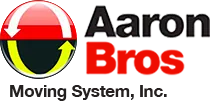If you are in the process of relocating but opt not to hire professional movers, you may be looking to utilize a truck rental.
Luckily, 3 of our 4 self-storage facilities (Hyde Park, South Shore, and Auburn/Gresham), offer truck rentals in addition to our secured self-storage. Now, packing a truck may seem pretty straight-forward, but there are insider tips to help maximize your loading capability and cut down on travel time (i.e. cost!)
Once all of your items are properly packed and ready for transit, it’s time to load that truck! It’s best to keep in mind the following two goals:
- Load the truck in the most safest way possible, with a focus of restricting movement during transit
- Get all the items successfully loaded so you are only performing one trip
The foundation for a successfully packed truck rental begins with your packing. Try to stick with like-size boxes and wrap and protect your items within the boxes with pads, newsprint, bubble-wrap, etc. Boxes and valuables will most likely shift no matter how carefully you drive so it’s best to adhere to the following truck packing practices:
- Valuables and fragile items can be packed very carefully in the “Mother’s Attic” feature on most truck rentals. This is a separate compartment that sits directly above the cab of the truck and a great place to stash those items that require extra protection. We recommend cushioning the boxes once you are through loading with padding or blankets before moving onto step 2.
- Heaviest items should be moved and loaded first, against the far wall closest to the cab. This would include appliances such as your stove, washer and dryer, and refrigerator. Keep these items upright and try to equally distribute the weight on both opposing sides of the truck. Fill any empty space with padding material and/or blankets. Loading these items first keeps the weight to the front of the truck, making it more safe on the road.
- Next, load couches, mattresses, box springs, and any and all long pieces of furniture on the sides of the truck. This will help save space and create a layer of protection for the next level of items packed. We recommend securing these longer items to the rails within the truck with rope for added security.
- Disassembled furniture such as dining room sets, entertainment centers, bed frames, etc., should be loaded in the rental truck in front of the heavy duty items and in between the long pieces of furniture.
- Now it is time to start loading the largest and heaviest boxes. You can use a few of the heavier boxes to fill in space from steps 1-4, but only if the boxes are secure and do not contain anything fragile. Remaining boxes should be stacked according to size and weight, moving from largest and heaviest to smallest and lightest. Stack up, as high as you can. (Any leftover space can be filled in with items packed in garbage bags like linens or clothes.)
- Once all boxes are securely on the truck, move onto anything awkwardly shaped or light in weight and place them as best as you can in front of your rows of boxes. Fragile boxes are best put onto the truck rental at this point where they are away from heavy and large items and have less of a chance of being crushed. The best places to store these boxes are in cubbyhole areas like beneath stationary chairs, desks, or under tables.
- Lastly, miscellaneous items that are not fragile should be loaded onto the truck. This would include clothes, shoes, bedding, towels, anything that is not at risk of breaking during transit. As an added bonus, these softer items create a final barrier between your belongings and the truck’s door.
Hone in on your Tetris skills and fill in any space along the way with soft material. It is recommended to rent a truck with 10-15% greater capacity then what you believe you may need. It will cost you less money in the long run to have the right size truck then to make multiple trips and rack up on mileage and gas charges. Always remember to drive cautiously without any distractions and to sweep out the truck rental and replace the gas to avoid any unwanted fees.


